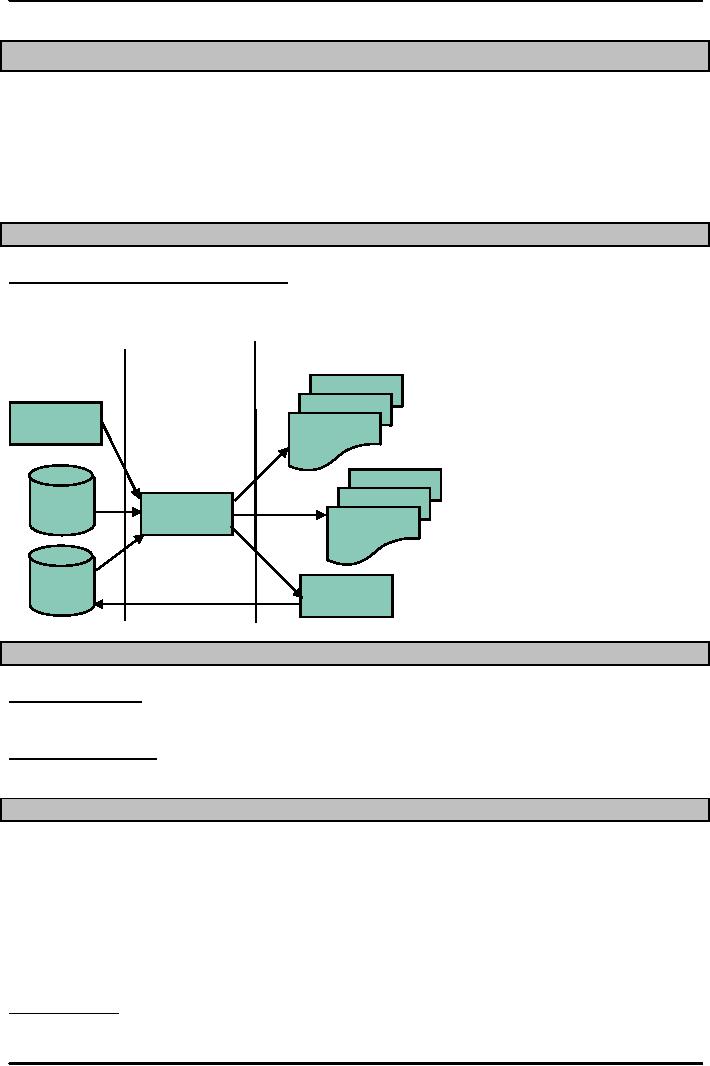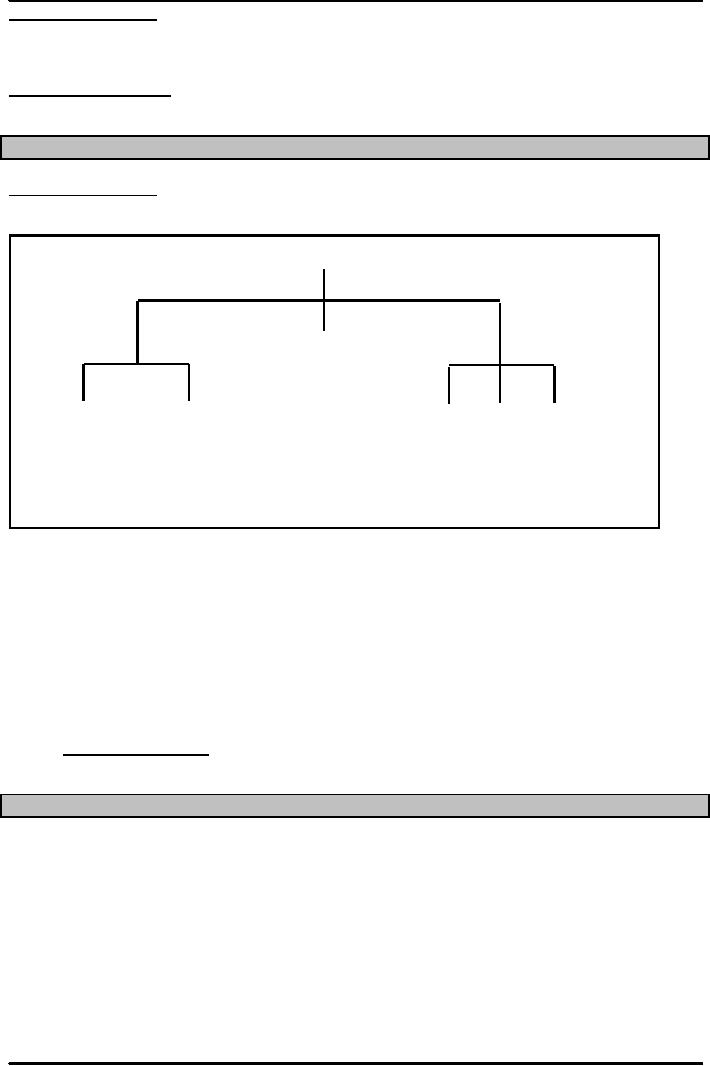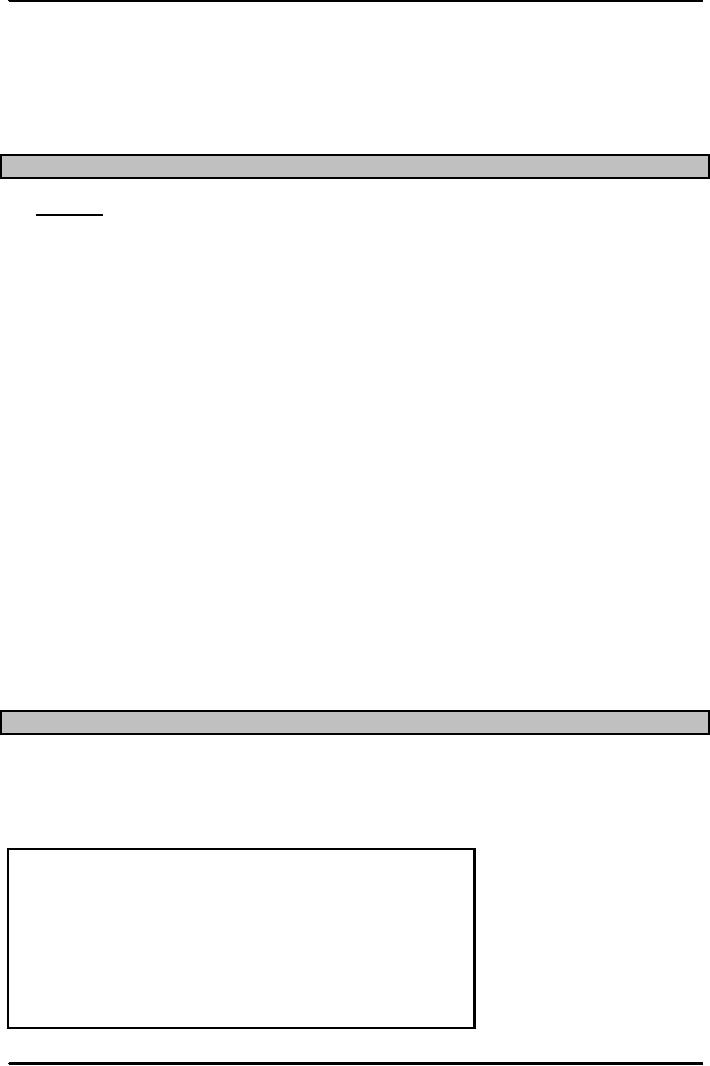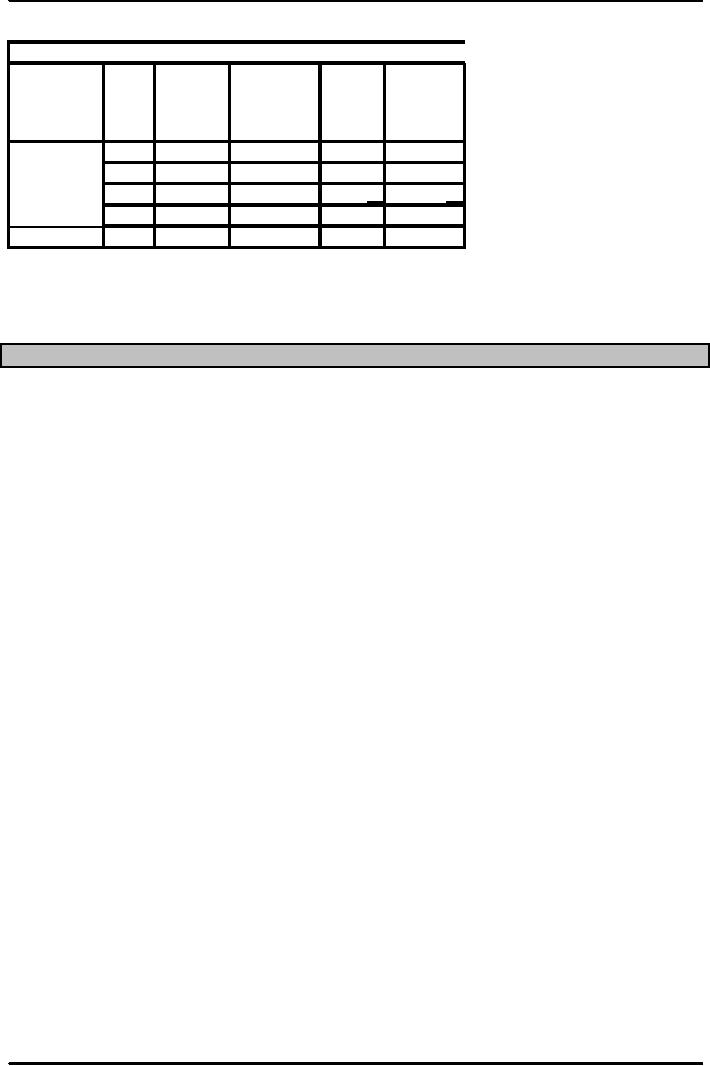 |
INVENTORY MANAGEMENT:Independent and Dependent Demand |
| << INVENTORY MANAGEMENT:Economic Production Quantity Assumptions |
| INVENTORY MANAGEMENT:Capacity Planning, Manufacturing Resource Planning >> |

Production
and Operations Management
MGT613
VU
Lesson
34
MRP /
ERP
Learning
Objectives
Describe
the conditions under which
MRP is most
appropriate.
Describe
the inputs, outputs and nature of MRP
processing.
Explain
how requirements in a Master Production
Schedule are translated into
material
requirements
for lower level
items.
Discuss
benefits and requirements of MRP.
MRP
Material
requirements planning (MRP):
Computer-based
information system that
translates master
schedule
requirements for end items into time-phased
requirements for subassemblies,
components, and
raw
materials.
MRP
MRP
MRP
Change
Order
Master
Planned-
schedule
order
Primary
reports
Exception
reports
Bill
of
Planning
reports
materials
MRP
Secondary
Performance-
reports
computer
control
reports
Inventory
Inventory
records
transaction
Independent
and Dependent Demand
Dependent
demand: Demand
for items that are
subassemblies or component parts to be
used in
production
of finished goods. Once the
independent demand is known, the
dependent demand can be
determined.
Cumulative
lead time: The
sum of the lead times that sequential
phases of a process require,
from
ordering
of parts or raw materials to completion
of final assembly.
MPR
Inputs
MRP
has three Inputs
�
Master
Schedule Plan
�
Bill
of Materials
�
Inventor
Records
Master
Production Schedule
Time-phased
plan specifying timing and
quantity of production for
each end item.
Material
Requirement Planning
Process
Master
Schedule
Master
schedule: One
of three primary inputs in MRP;
states which end items are to be
produced, when
these
are needed, and in what
quantities.
160

Production
and Operations Management
MGT613
VU
Cumulative
lead time: The
sum of the lead times that sequential
phases of a process require,
from
ordering
of parts or raw materials to completion
of final assembly.
Planning
Horizon
Bill-of-Materials
Bill
of materials (BOM): One
of the three primary inputs of MRP; a
listing of all of the raw
materials,
parts,
subassemblies, and assemblies needed to
produce one unit of a product.
Product
Structure Tree
Product
structure tree:
Visual depiction of the requirements in a
bill of materials, where all
components
are
listed by levels.
Level
Chair
0
Leg
Back
1
Assembly
Assembly
Seat
Cross
Side
Cross
Back
2
Legs (2)
bar
Rails
(2) bar Supports
(3)
3
Inventory
Records
One
of the three primary inputs in
MRP
Includes
information on the status of each
item by time period
Gross
requirements
Scheduled
receipts
Amount
on hand
Lead
times
Lot
sizes
And
more ...
Assembly
Time Chart
Cumulative
lead time: The
sum of the lead times that
sequential phases of a process
require,
from
ordering of parts or raw materials to
completion of final assembly.
MRP
Processing
1.
Gross requirements
2.
Schedule receipts
3.
Projected on hand
4.
Net requirements
5.
Planned-order receipts
6.
Planned-order releases
Updating
the System
1.
Regenerative system
2.
Updates MRP records
periodically
3.
Net-change system
4.
Updates MPR records
continuously
MRP
Outputs
161

Production
and Operations Management
MGT613
VU
1.
Planned orders - schedule indicating the
amount and timing of future
orders.
2.
Order releases - Authorization
for the execution of planned
orders.
3.
Changes - revisions of due dates or
order quantities, or cancellations of
orders.
MRP
Secondary Reports
1.
Performance-control reports
2.
Planning reports
3.
Exception reports
Other
Considerations
Lot
sizing is the Choosing of a lot
size for ordering or
production.
For
dependant demand, managers have variety
of methods available as there is no clear
cut
advantage
associated with anyone
particular method. They can
use
1.
Lot for Lot
Ordering.
2.
Economic Order Quantity
Model
3.
Fixed Period Ordering
4.
Part Period Model.
Lot-for-lot
ordering
1.
Simplest method
2.
The order or run size
for EACH period is set
equal to demand for that
period.
3.
Eliminates holding costs for
parts carried over to other
periods.
4.
Minimizes investment in
inventory.
5.
It involves different order
sizes ( can not make use of
fixed order size , standard
containers
and
standardized procedures) and requires a new
setup for each
run.
6.
If set up costs can be
reduced this would be ideal
to approximate the minimum cost
lot size.
Economic
order quantity models tend to be
less ideal.
Fixed
Period Ordering provides coverage
for some predetermined number of
periods.
Rule
of thumb being to order to
cover a two period
interval.
Part-Period
Model represents an attempt to balance
set up and holding
costs.
The
part period term refers to holding
part or parts over a number of periods,
e.g. if a business holds
20
parts for 3 periods this
would be a 20 X 3= 60 parts
period.
Economic
Part Period ( EPP) is the
ratio of setup costs to the
cost of hold a unit for one
period.
Part-Period
Model
Various
order sizes are examined
for planning horizon and
each one\s number of part
period is
determined.
The
one that is closet to the EPP is
selected as the best lot
size.
Example
for Part Period
Method
Use
part-period method to determine order
sizes for the demand
schedule of a Montessori
equipment
manufacturer
in Karachi. The setup cost
is Rs. 8000 per run for
this item and unit holding
cost is Rs.
100
per period.
Data
PERIODS
1
2
3
4
5
6
7
8
DEMAND
60
40
20
2
30
-
70
50
CUMULATIVE
60
100
120
122
152
152
222
272
DEMAND
162

Production
and Operations Management
MGT613
VU
�STEP
I : First compute EPP which is
8000/100=80
PERIODS
Part
Cumulative
Period
when
Lot
Extra
Multiplied
Periods
Part
order
is
Size
Inventory
by
Periods
placed
carried
Periods
carried
60
0
0
0
0
1
100
40
1
40
40
120
20
2
40
80
122
2
3
6
86
5
30
0
0
0
0
Our
calculations show that we need to
order 122 units to be
available at period 1 and 100
units
should
be ordered available at period 5.
The
effect of lumpy demands set
in period 5 and period 8.
Benefits
of MRP
Low
levels of in-process
inventories
Ability
to track material requirements
Ability
to evaluate capacity requirements
Means
of allocating production
time
163
Table of Contents:
- INTRODUCTION TO PRODUCTION AND OPERATIONS MANAGEMENT
- INTRODUCTION TO PRODUCTION AND OPERATIONS MANAGEMENT:Decision Making
- INTRODUCTION TO PRODUCTION AND OPERATIONS MANAGEMENT:Strategy
- INTRODUCTION TO PRODUCTION AND OPERATIONS MANAGEMENT:Service Delivery System
- INTRODUCTION TO PRODUCTION AND OPERATIONS MANAGEMENT:Productivity
- INTRODUCTION TO PRODUCTION AND OPERATIONS MANAGEMENT:The Decision Process
- INTRODUCTION TO PRODUCTION AND OPERATIONS MANAGEMENT:Demand Management
- Roadmap to the Lecture:Fundamental Types of Forecasts, Finer Classification of Forecasts
- Time Series Forecasts:Techniques for Averaging, Simple Moving Average Solution
- The formula for the moving average is:Exponential Smoothing Model, Common Nonlinear Trends
- The formula for the moving average is:Major factors in design strategy
- The formula for the moving average is:Standardization, Mass Customization
- The formula for the moving average is:DESIGN STRATEGIES
- The formula for the moving average is:Measuring Reliability, AVAILABILITY
- The formula for the moving average is:Learning Objectives, Capacity Planning
- The formula for the moving average is:Efficiency and Utilization, Evaluating Alternatives
- The formula for the moving average is:Evaluating Alternatives, Financial Analysis
- PROCESS SELECTION:Types of Operation, Intermittent Processing
- PROCESS SELECTION:Basic Layout Types, Advantages of Product Layout
- PROCESS SELECTION:Cellular Layouts, Facilities Layouts, Importance of Layout Decisions
- DESIGN OF WORK SYSTEMS:Job Design, Specialization, Methods Analysis
- LOCATION PLANNING AND ANALYSIS:MANAGING GLOBAL OPERATIONS, Regional Factors
- MANAGEMENT OF QUALITY:Dimensions of Quality, Examples of Service Quality
- SERVICE QUALITY:Moments of Truth, Perceived Service Quality, Service Gap Analysis
- TOTAL QUALITY MANAGEMENT:Determinants of Quality, Responsibility for Quality
- TQM QUALITY:Six Sigma Team, PROCESS IMPROVEMENT
- QUALITY CONTROL & QUALITY ASSURANCE:INSPECTION, Control Chart
- ACCEPTANCE SAMPLING:CHOOSING A PLAN, CONSUMER’S AND PRODUCER’S RISK
- AGGREGATE PLANNING:Demand and Capacity Options
- AGGREGATE PLANNING:Aggregate Planning Relationships, Master Scheduling
- INVENTORY MANAGEMENT:Objective of Inventory Control, Inventory Counting Systems
- INVENTORY MANAGEMENT:ABC Classification System, Cycle Counting
- INVENTORY MANAGEMENT:Economic Production Quantity Assumptions
- INVENTORY MANAGEMENT:Independent and Dependent Demand
- INVENTORY MANAGEMENT:Capacity Planning, Manufacturing Resource Planning
- JUST IN TIME PRODUCTION SYSTEMS:Organizational and Operational Strategies
- JUST IN TIME PRODUCTION SYSTEMS:Operational Benefits, Kanban Formula
- JUST IN TIME PRODUCTION SYSTEMS:Secondary Goals, Tiered Supplier Network
- SUPPLY CHAIN MANAGEMENT:Logistics, Distribution Requirements Planning
- SUPPLY CHAIN MANAGEMENT:Supply Chain Benefits and Drawbacks
- SCHEDULING:High-Volume Systems, Load Chart, Hungarian Method
- SEQUENCING:Assumptions to Priority Rules, Scheduling Service Operations
- PROJECT MANAGEMENT:Project Life Cycle, Work Breakdown Structure
- PROJECT MANAGEMENT:Computing Algorithm, Project Crashing, Risk Management
- Waiting Lines:Queuing Analysis, System Characteristics, Priority Model